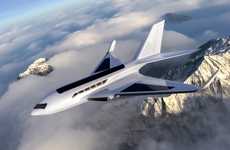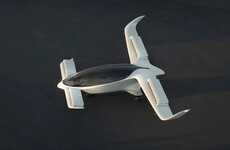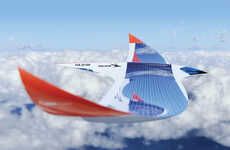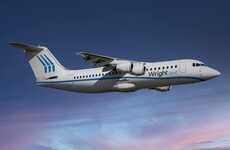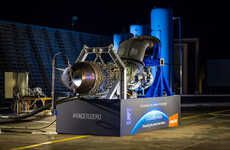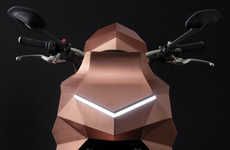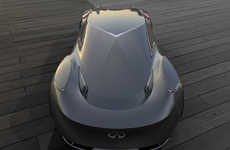
MIT's Electroaerodynamic Plane Could Change the Future of Airplanes
Justin Lam — November 26, 2018 — Eco
References: technologyreview & theverge
Typical jets rely on fast-moving blades for propulsion but this new electroaerodynamic plane manages to fly without the need of any moving parts. Developed by researchers at MIT, this electroaerodynamic plane utilizes a pair of electrodes to push ions and essentially create ionic wind. Though this technology has been known since the 1960s, this is the first time it has been applied to propel a plane.
While this technology may never be used to power a passenger plane, MIT researchers speculate that the electroaerodynamic plane could be used to power smaller drones. Alternatively, the tech could be used in passenger planes in combination with traditional plane engines. This combination would craft a more fuel-efficient system by reenergizing the air that passes over the aircraft and eliminating drag.
Image Credit: MIT
While this technology may never be used to power a passenger plane, MIT researchers speculate that the electroaerodynamic plane could be used to power smaller drones. Alternatively, the tech could be used in passenger planes in combination with traditional plane engines. This combination would craft a more fuel-efficient system by reenergizing the air that passes over the aircraft and eliminating drag.
Image Credit: MIT
Trend Themes
1. Ionic Wind Propulsion - The use of ionic wind as a propulsion method has the potential to disrupt the aerospace industry by offering a more fuel-efficient and environmentally friendly alternative to traditional engines.
2. Electric Drones - The development of electroaerodynamic technology opens up new possibilities for powering smaller drones without the need for heavy batteries or fast-moving blades.
3. Hybrid Aircraft - Combining electroaerodynamic propulsion with traditional engines in passenger planes could revolutionize the aviation industry by improving fuel efficiency and reducing drag.
Industry Implications
1. Aerospace - The aerospace industry could benefit from the disruptive innovation of ionic wind propulsion, potentially leading to more sustainable and energy-efficient aircraft.
2. Drone - The drone industry can leverage electroaerodynamic technology to create electric drones that are more efficient, lighter, and have longer flight times.
3. Aviation - The aviation industry has the opportunity to embrace hybrid aircraft designs that combine electroaerodynamic propulsion with traditional engines for enhanced performance and reduced environmental impact.
5.1
Score
Popularity
Activity
Freshness


